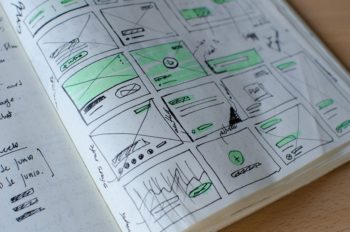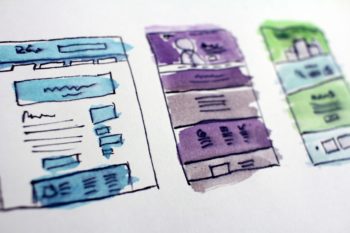Design Thinking is Not About Design

“Design Thinking” is a hot buzzword these days. It’s also an unfortunate name, because most people assume that it means “Think like a graphic designer”, when in fact it has nothing to do with graphic design.
Design thinking is an engineering methodology for developing successful products. Design Thinking has nothing to do with making something “pretty” and everything to do with making something useful. For example, an engineer could use it to develop an ugly machine that does its job beautifully.

The most commonly used framework for Design Thinking is the one pictured above, developed by the Hasso Plattner Institute at Stanford (aka “The d.school”).
In the diagram above, there are five steps:
- Empathize: As an engineer, before you develop a next-generation washing machine you have to do a few hundred loads of wash yourself, and talk to a whole bunch of people who wash clothes. Only then – after you fully understand what washing machine users care about – can you actually begin to develop meaningful features.
- Define: Create a point of view that is based on what you’ve discovered about people who wash clothes. Maybe the point of view you’ve developed is that a load of clothes needs to wash faster!
- Ideate: This is the brainstorming phase – how could we develop a washing machine that washes faster? Maybe we could have two drums running in parallel so that we can have a color load and a whites load going at the same time?
- Prototype: There’s an adage that says that good engineers build prototypes to show something, while great engineers build prototypes to learn something. Design Thinking is all about rapid prototyping in order to learn.
- Test: Share your prototypes with people who wash clothes. Get their input. What works for them, and what doesn’t? Do they like your brilliant parallel washing drum or does it just make their job harder?
Importantly, this Design Thinking framework is not meant to be linear; it’s meant to be iterative. So it’s not just follow steps 1,2,3,4,5 and you’re done. It’s actually more like 1, 3, 4,2,5,1,4,5,5,4,2,1,5,4,5, over and over and over until you’ve got an innovative new product that matches the needs and expectations of real-world users.
So there you have it. Design Thinking has nothing to do with graphic design and very little to do with UI/UX design. But it has everything to do with developing products that succeed.
Recommended Read : How to Apply Disruptive Thinking in Your Business
Want to know more? This online 90-minute crash course in Design Thinking is a great place to start. I teach Design Thinking in my entrepreneurship course at Stanford University and we use it to develop successful software products at Tivix. See more examples here.




